Subfamily Geoemydinae Scientific name Cuora amboinensis Order Turtle | Genus Cuora Phylum Chordata Rank Species | |
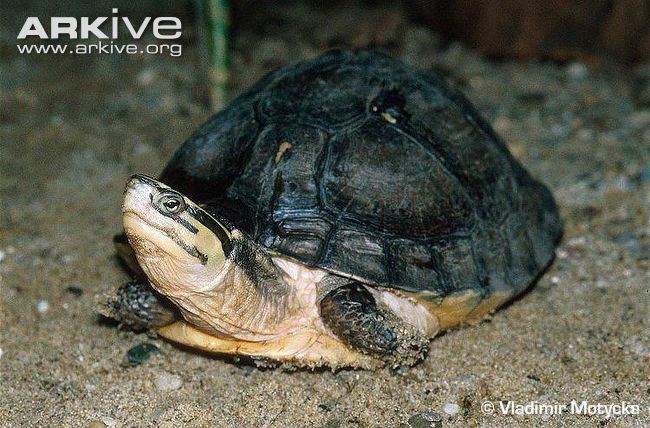 | ||
Similar Turtle, Asian box turtle, Reptile, Cyclemys, Asian leaf turtle | ||
The Amboina box turtle (Cuora amboinensis), or southeast Asian box turtle is a species of Asian box turtle.
Contents
It is found in the Nicobar Islands, eastern India (Assam), Bangladesh, Myanmar, Thailand, Cambodia, Laos, central and southern Vietnam, west Malaysia, Singapore, Philippines (Leyte, Luzon, Mindanao, Samar, Negros, Panay, etc.), Indonesia (Sulawesi, Ambon Island, Sumatra, Borneo, East Malaysia, Brunei, Nias, Enggano, Simeulue, Java, Sumbawa, Halmahera, Ceram, Seram, Buru, East Timor, Bali, Palawan and Maluku), and possibly China (Guangxi and Guangdong) and Sri Lanka.
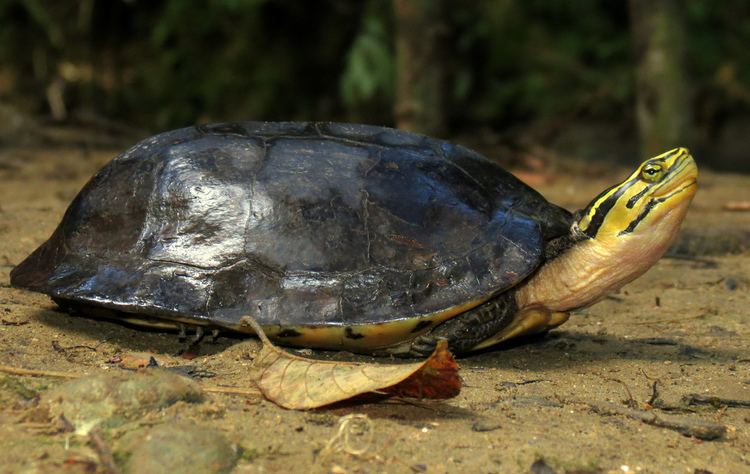
The type locality is "Amboine" (or "Amboina") Island, today Ambon Island in Indonesia.
Description
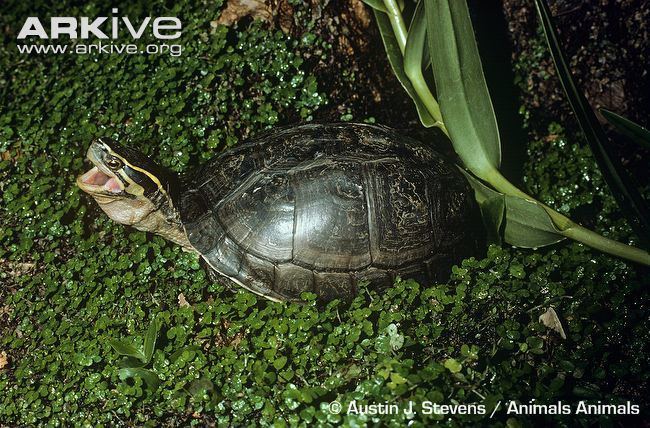
These turtles have blackish-brown to olive brown colored shells that are not as ornate as many other box turtles. All have a blackish olive head with three yellow stripes on the side. The male can be identified by the slightly concave shape to its plastron. There is no specific pattern to what the underbellies may look like, for either sex. The only true way of telling age is to guess by the texture of the shell, as growth rings form irregularly.
There are four subspecies that are primarily differentiated by differences in the color and shape of the carapace:
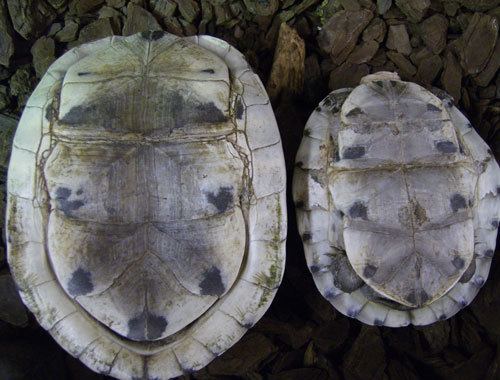
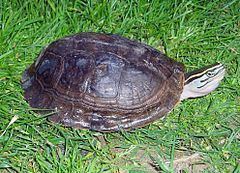
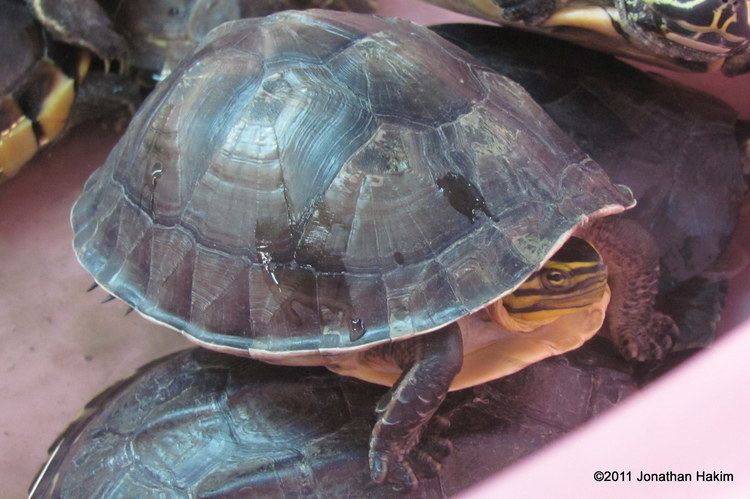
Several distinct populations are believed to represent up to 4 more subspecies, or at least striking varieties.
C. a. kamaroma has hybridized in captivity with the Vietnamese pond turtle – a species nearly extinct in the wild – and with males of the Chinese pond turtle (Chinemys reevesii). Other hybrids are known, like C. amboinensis × Cuora trifasciata.
Ecology and status
They are omnivorous, with younger turtles tending towards more meat consumption and older turtles eating a more herbivorous diet.
Although Cuora amboinensis is classified as Vulnerable by the IUCN, they are able to thrive in some areas of the world. For example, they can be found in the storm drains of Brunei. These are seriously polluted, and yet seem to be extremely popular habitat for these turtles and other animals that can withstand eutrophication. In some places, this species is hunted for use in folk medicine.
Cuora amboinensis can be quite difficult to breed in captivity, compared with other box turtles. These turtles have a mating ritual very similar to that of other box turtles. No courtship occurs, the male simply climbs upon the female. He then snaps at her head, so that she closes the front half of her shell, opening the back.
Pet care
Any individual considering a turtle as a pet should thoroughly research both general care and the care of the particular species in which they are interested. Individuals considering a Cuora amboinensis as a pet should keep in mind that it is a tropical, non-hibernating species who needs much warmer water (about 82 degrees F) than many other semi-aquatic species. The adult Cuora amboinensis is smaller in comparison to more well-known species such as the red-eared slider or cooter, but a fully grown adult will generally need at least a 55-gallon tank and this habitat should be semi-aquatic, not terrestrial.
Cuora amboinensis is far more aquatic than many other box turtle species. Unfortunately, this has often led to pet Cuoras being incorrectly housed in terrestrial habitats. Although they are clumsy swimmers and need shallower water than other semi-aquatic turtles that are stronger swimmers, (e.g., sliders, cooters, and painteds), they tend to vastly prefer being in the water to on land. In the wild, they will often live in almost entirely in water only emerging to bask and to lay eggs. They can even mate in the water.
